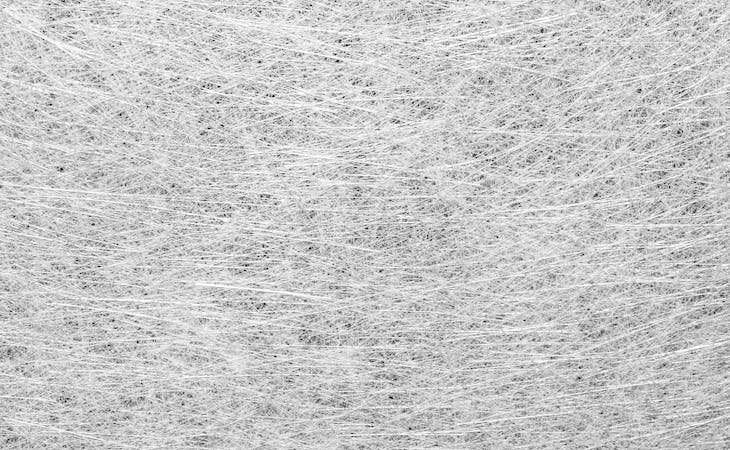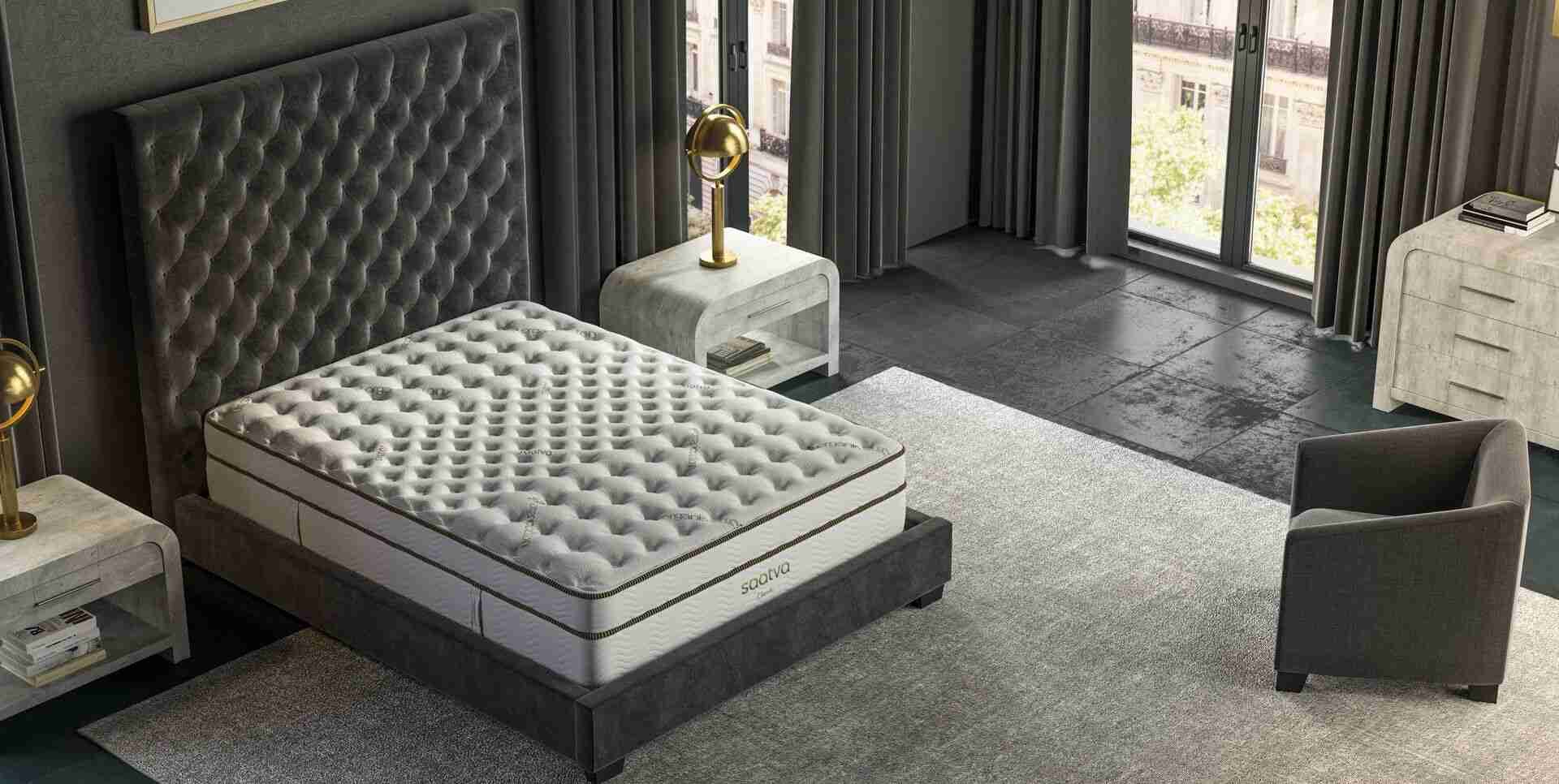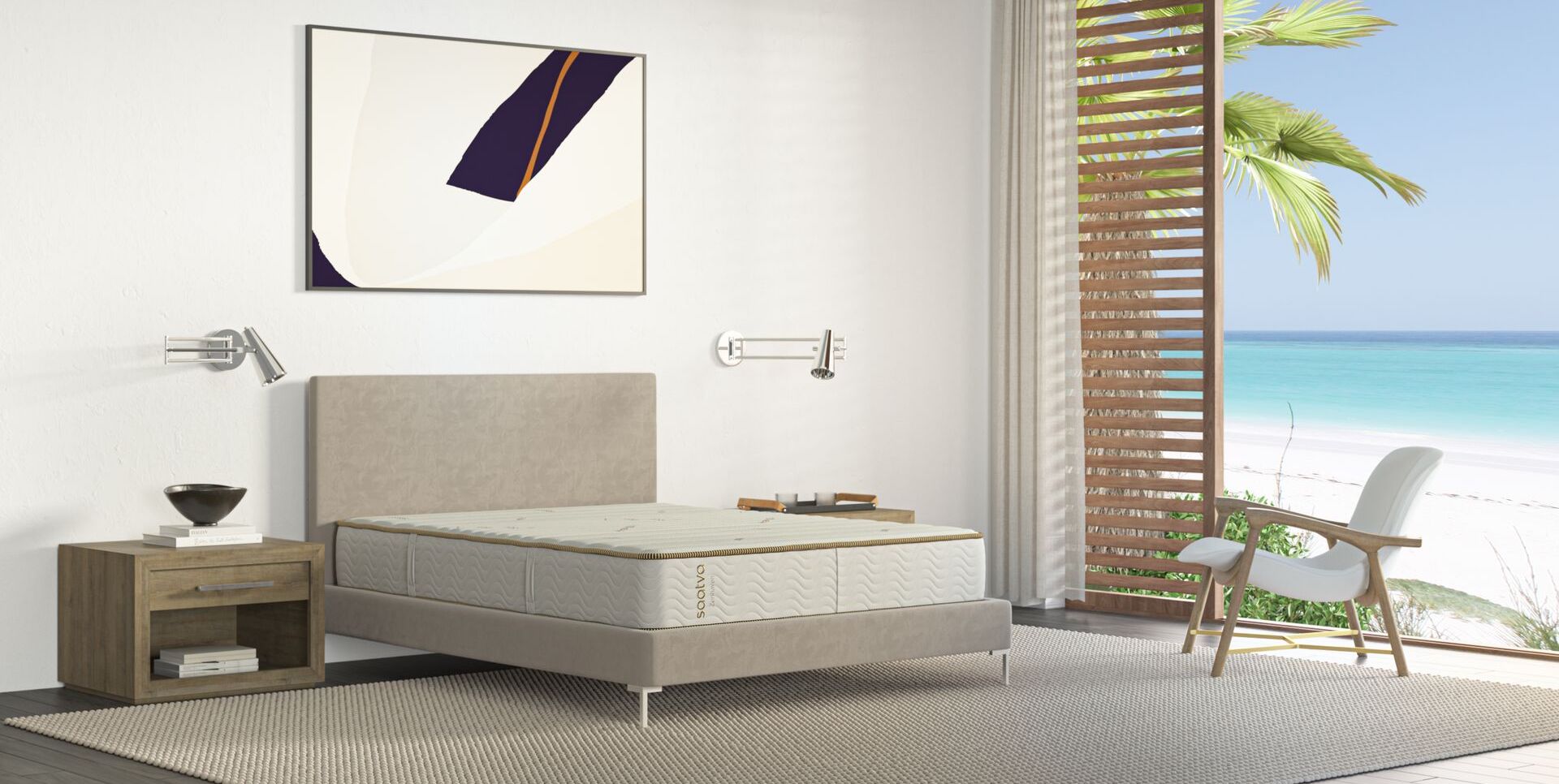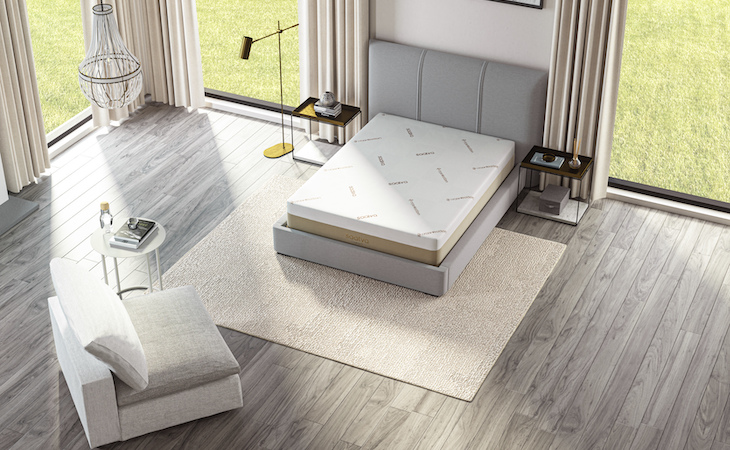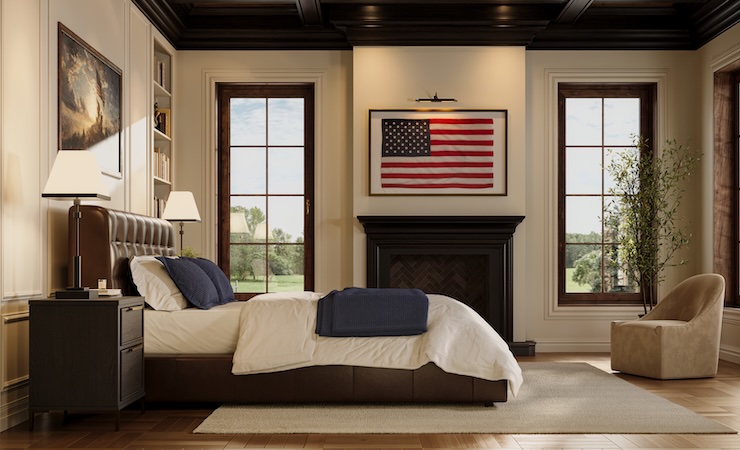You may have heard some negative buzz surrounding fiberglass in mattresses. A few recent class-action lawsuits have been opened against mattress brands that use fiberglass in their products without warning consumers of its potential dangers.
But you may not know what fiberglass is or why it’s used in some mattresses in the first place. That’s why we put together the following explainer.
Keep reading to learn more about fiberglass in mattresses and get answers to your most commonly asked questions on this issue.
What is fiberglass?
Fiberglass is a type of composite material that’s made by reinforcing plastic with glass fibers. It’s very lightweight and flexible, so it’s easy to flatten into a sheet or mold into any other shape.
In addition to being weather-resistant and durable, fiberglass is also low-cost, making it a popular material for all kinds of industries.
It’s used in everything from boats to airplanes to bathtubs to roofing (think the fluffy cotton-candy-looking stuff stuck against the walls of your attic for insulation).
Why is fiberglass used in mattresses?
All mattresses are required by law to have a flame barrier. In Saatva mattresses, we use natural thistle or organic New Zealand wool—both naturally derived nontoxic materials—for this purpose.
However, some cheaper mattresses—typically mattresses that come in a box—use a fiberglass inner cover underneath the outer cover as the flame retardant. That’s because fiberglass is heat-resistant and inexpensive.
Fiberglass became especially common after certain chemical fire retardants were banned due to toxicity concerns. But, as you’ll see shortly, fiberglass isn’t without its own safety concerns.
Where is fiberglass located in a mattress?
The fiberglass layer is usually found underneath the outer cover of a mattress. It typically wraps around the entire inner part of the mattress.
In the case of a fire, the fiberglass layer acts as a barrier, melting and thus slowing the spread of the flame.
Is fiberglass in mattresses safe?
Fiberglass is meant to slow the spread of fire. As long as the fiberglass stays inside the mattress, it should be relatively safe.
That said, there have been complaints that in some cheaply-made mattresses, the fiberglass can leak through. Plus, if you remove the mattress cover, this can potentially cause tiny fiberglass particles to escape and spread around your living space.
While there’s no current research about the long-term effects of fiberglass exposure, there are some common issues that can arise when someone is exposed to the fiberglass in a mattress.
These include itchy skin, sore throat, and red eyes. The particles could even reach the lower part of your lungs, causing lung scarring.
Moreover, once fiberglass finds a way out of your mattress and into your living space, it’s nearly impossible to get rid of it.
FAQs
Do most mattresses contain fiberglass?
Not all mattresses contain fiberglass, but some cheaper mattresses—particularly beds in a box—do use it.
Mattresses that are least likely to have fiberglass in them are those made from natural, eco-friendly, or organic materials.
Is there fiberglass in memory foam beds?
Fiberglass is typically used in bed in a box mattresses, which are made of foam. Choosing a higher-quality, eco-friendly memory foam mattress will cut down your chances of having fiberglass in it.
How do I know if there’s fiberglass in my mattress?
Brands that use fiberglass don’t typically advertise it. You may want to look carefully at the list of materials used. It’ll sometimes be listed as glass fibers or glass wool.
Also, if a manufacturer says you shouldn’t remove the cover, then that could be a sign there’s fiberglass underneath.
Is fiberglass in a mattress dangerous?
Fiberglass can potentially be dangerous. But because the public awareness of this problem is relatively new, there aren’t any studies yet confirming possible long-term health effects.
What’s clear, though, is that fiberglass can irritate your skin, eyes, throat, and even your lungs if you’re exposed to it. And keep in mind that if fiberglass particles contaminate your home, it’ll be nearly impossible to get rid of them.
Find a fiberglass-free mattress from Saatva
Fiberglass has been used by some mattress brands as an alternative to some toxic chemical fire retardants that are now officially banned. However, we’re learning now that fiberglass can potentially be dangerous.
When shopping for a new mattress, make sure to read the list of materials carefully—and consider choosing a mattress that uses natural materials as fire retardants.
All of Saatva’s mattresses are made from high-quality materials—and we only use safe, nontoxic ingredients for our flame retardant, like natural thistle (plant-based fiber made mainly from wood pulp) and organic New Zealand wool.
If you’re still not sure which mattress is the perfect match for you, then go ahead and take our mattress quiz to find out.

